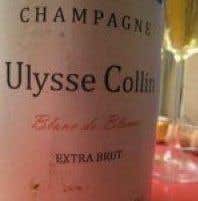A colleague on the Financial Times recently sent me this query:
Can I ask you to settle a mild debate on Champagne with an oenophile friend? He maintains that many bottles carry two tiny letters and numbers denoting the quality of the wine, from low through mediocre to extra quality. I say this is possibly an urban myth (if only for the difficulty of establishing the mechanism of classification). Over to you. Many thanks.
I thought buyers of champagne who are less clearly experienced in this practice (if such a breed still exists in these straitened times), might be interested my answer:
Most champagne labels carry a two-letter code in the small print next to the producer's name:
NM – négociant manipulant, responsible the majority of champagne produced, houses that buy in grapes and wine with a huge variation in quality – not all bad
RM – récoltant manipulant, a grower who makes champagne out of their own grapes which includes some very good (value) and some pretty dire wine
CM – a co-op, not usually great but, for example, Union Champagne do the business pretty well for Tesco Premier Cru, H Blin can make some excellent vintage champagne, Jacquart have some good cuvees, Beaumont des Crayères can be a good buy, etc etc
RC – récoltant co-opérateur, someone who's a member of a co-op and buys back wine from them to sell under their own label
So it's not a sure-fire guide to quality but most RM wines that find their way into commerical circulation in the UK and US is pretty good and generally much better value than most NM wines. I recently enjoyed Ulysse Collin, Blanc de Blancs Extra Brut NV Champagne, for example, which is sold in the UK by Vine Trail who are particularly active importers of growers’ (RM) champagnes and are selling it on their website for £27.95 a bottle. The wine, made in the village of Congy, starts very rich on the nose but is admirably zesty, crisp and energetic on the palate with a crisp, bone dry finish. I gave it a score of 17 and would happily drink it any time over the next three or four years. It is apparently made entirely from the superior 2004 vintage and was aged in trendy oak barrels. It therefore came as no surprise to learn from Peter Liem's blog (from which the photograph also came) that Olivier Collin's inspiration comes from working with Selosse. This is clearly a name to watch.
However, I hear that, hardly surprisingly, sales of all but the most sought-after champagnes are plummeting. On the other hand, the big houses (NM) have bought copious quantities of base wines at relatively high prices recently, spurred on by recent shortages of stock that suddenly seem unlikely to be sustained. Amazing how rapidly the supply and demand equation can change.
And if you want to read a really passionate denunciation of NM champagne in favour of the better RMs, try US importer Terry Thiese's latest champagne catalog, reviewed by Jon Bonne of the San Francisco Chronicle here. If you think my criticisms of the champagne industry were strong on that recent Dispatches tv programme, take a sedative before reading this.

